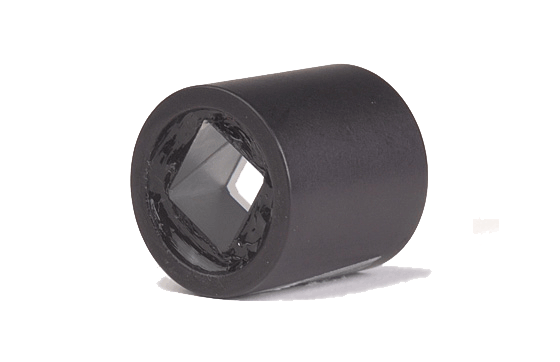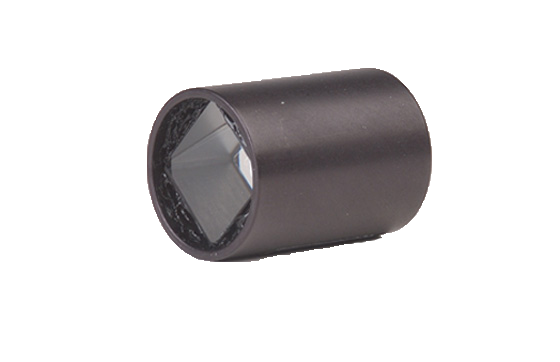Overview of Polarizers
Our polarizers are made of two calcite crystals. The entrance and exit faces are normal to the direction of light propagation; the prism is cut at an angle such that the ordinary beam is totally reflected (by total internal reflection) at the first face.
Compatible with ChronosBH, ChronosDFD, and PC1.Glan-Thompson Polarizers
In Glan-Thompson polarizers, the two calcite crystals are cemented together with optical cement with transmission in the UV (such as Sylgard by Dow Corning Corp.). The cement may slightly absorb radiation at high power levels and may cause it to heat up and release substances that reduce the transmission of the polarizer. Two aperture sizes are available: 10 x 10 mm (100 mm2 view area) and 14 x 14 mm (196 mm2 view area).

Glan-Taylor Polarizers
In Glan-Taylor polarizers, the two crystals are separated by an air gap. They should be used when the excitation source is a strong laser emitting more than 800 mW of power. The aperture is 10 x 10 mm.

Product Specifications for Polarizers
| Polarizer | Glan-Thompson | Glan-Taylor |
|---|---|---|
| Wavelength Range (nm) | 230 - 2,300 | 215 - 2,300 |
| Length-to-Aperture (L/A) Ratio |
|
0.85 |
| Useful Field Angle* | 14° - 16° | 8.5° |
| Extinction Ratio | 1 x 10-4 at 2/3 or less of full aperture | 5 x 10-5 at 2/3 or less of full aperture |
Surface Quality
- Military Grade B (as per MIL-G-174A, dated Oct. 5, 1963, paragraphs 3.3.8)
Type
- The plane of polarization is at 45° with respect to the sides (i.e. across the diagonal of the square aperture)
Mounting
- Cylindrical Black Anodized Aluminum, 25.0 mm diameter, with notch indicating location of parallel polarization
*Useful Field Angle Definition
- The useful acceptance angle of a prism polarizer with L/A = 2.5 varies from about 14° at 350 nm to about 16° at 1,000 nm. It is important that the radiation beam impinging onto it be as parallel as possible. In fact, ray beams arriving at angles larger than 16° are reflected back. Spectrofluorometers featuring parallel beam geometry (beam between the collecting lens and the focusing lens is parallel) help to minimize reflections at the polarizer's entrance face.


